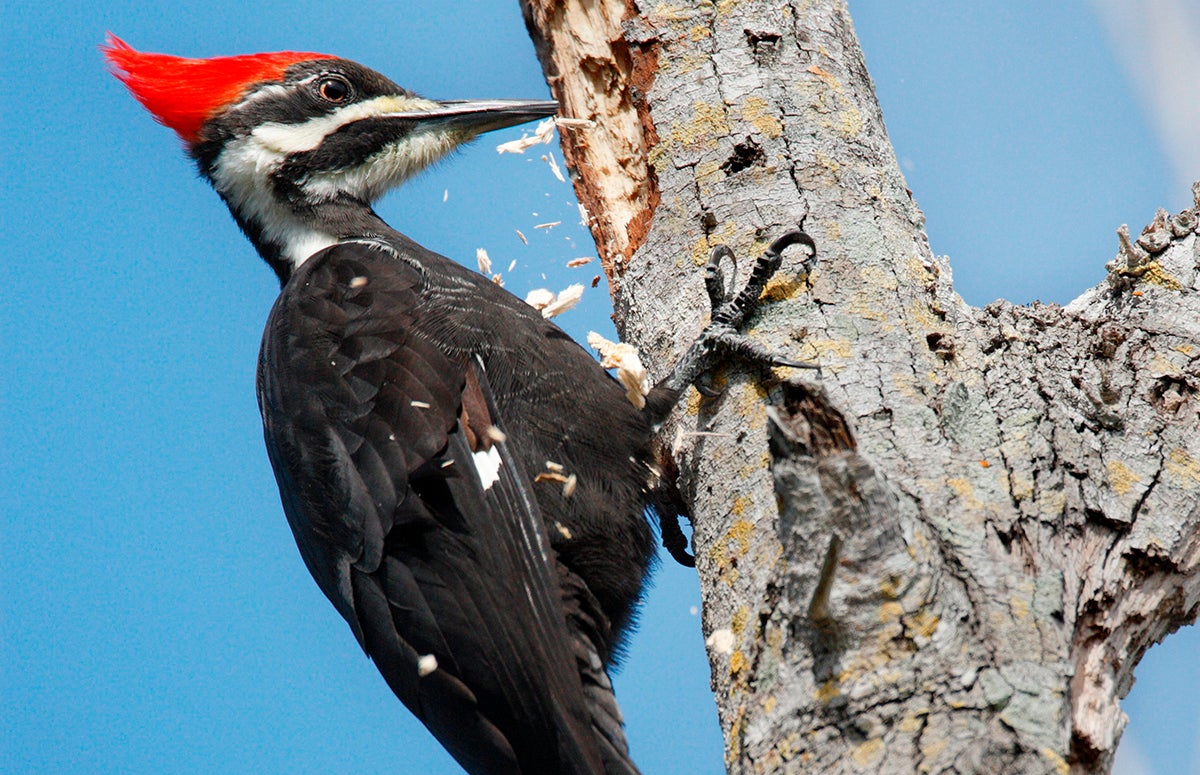Observing Woodpeckers in Florida: Types Variety and Distribution
Observing Woodpeckers in Florida: Types Variety and Distribution
Blog Article
Discover the Fascinating Globe of Woodpeckers: Everything You Required to Know
The globe of woodpeckers is a world loaded with special habits, intricate adaptations, and a varied array of species. From their environments and distribution patterns to their feeding routines and specialized anatomical features, woodpeckers have long captivated the rate of interest of ornithologists and nature lovers alike.
Woodpecker Habitats and Distribution
Woodpeckers populate a diverse range of atmospheres worldwide, showcasing adaptability in their distribution patterns. These durable birds are found in forests, woodlands, savannas, and deserts throughout numerous continents, demonstrating their capability to thrive in various climatic problems. In North America, as an example, woodpeckers can be identified in both coniferous and deciduous woodlands, using their solid beaks to forage for bugs and develop nesting cavities in trees. Likewise, in Africa, particular woodpecker species have adapted to dry environments, such as the acacia forests, where they play an essential function in managing insect populaces.
/https://tf-cmsv2-smithsonianmag-media.s3.amazonaws.com/filer_public/30/ac/30acf469-09cd-4fcc-a812-1aa30f477578/aprmay2024_l09_woodpeckers.jpg)
Feeding Behaviors and Diet Regimen
Woodpeckers use their strong beaks to drill right into the bark of trees, penetrating for insects and larvae hidden underneath the surface area. In enhancement to pests, woodpeckers likewise eat nuts, seeds, fruits, and sap.
Woodpeckers are known for their drumming actions, which offers not only to interact with various other woodpeckers however additionally to locate food. The quick drumming audio is developed by the bird pecking on powerful surfaces like dead trees or metal posts. This behavior can attract bugs concealed in the timber, enabling the woodpecker to identify their presence and feed on them.
Unique Adaptations for Tree Climbing
In their experienced search of bugs concealed within tree bark, woodpeckers have advanced exceptional anatomical attributes that outfit them with distinct adaptations for reliable tree climbing. Among the crucial adaptations is their zygodactyl feet, with 2 toes directing ahead and two directing backward, offering a solid hold on tree trunks. This customized foot setup permits woodpeckers to hold on to vertical surfaces effortlessly, enabling them to go up and down trees with dexterity. Additionally, woodpeckers have stiff tail plumes that serve as a supportive prop while they climb up, aiding in balance and stability. Their solid, chisel-like beaks are not only made use of for drilling right into wood yet also for grasping onto bark as they ascend tree trunks. Moreover, woodpeckers have solid neck muscles and an unique head structure that take in the influence of consistent pecking, enabling them to climb up up and down without triggering injury to their brains. These adjustments showcase the extraordinary transformative design that enables woodpeckers to navigate trees with accuracy and performance.
Diverse Woodpecker Species Worldwide
With over 200 various varieties spread across numerous environments worldwide, the family of Picidae includes an exceptional variety of woodpeckers. These birds can be discovered in forests, timberlands, savannas, and even urban areas, showcasing their flexibility to different atmospheres. From the iconic Northern Flicker in The United States And Canada to the colorful and evasive Crimson-backed Flameback in Asia, each woodpecker varieties shows distinct characteristics in regards to quill, habits, and environment preference.
Woodpeckers differ substantially in size, with the diminutive Downy Woodpecker determining around 6-7 inches in length, while the powerful Lineated Woodpecker can get to up to 17 inches - Woodpeckers in Florida. Their beaks additionally can be found in various sizes and shapes, mirroring their feeding behaviors. Some varieties concentrate on removing insects from click now tree bark, like the Acorn Woodpecker, while others, such as the Black-cheeked Woodpecker, feed on fruits and seeds

Preservation Initiatives and Challenges
Conservation initiatives for woodpecker populations are critical in reducing the effect of environment loss and various other dangers encountering these varied avian species. Woodpeckers encounter different challenges to their survival, largely due to logging, urbanization, check environment change, and intrusive species. To attend to these concerns, conservation initiatives concentrate on protecting and bring back woodpecker habitats, carrying out lasting forestry techniques, and increasing awareness concerning the relevance of these birds in ecological communities.
One considerable challenge in woodpecker conservation is the fragmentation of their environments, leading to separated populaces that are extra at risk to extinction - Woodpeckers in Florida. Conservationists function to produce wildlife hallways and shielded areas that connect these fragmented environments, enabling woodpeckers to move between various areas for feeding, breeding, and shelter

Conclusion
To conclude, woodpeckers are interesting birds with unique adaptations for tree climbing and feeding behaviors. They can be located in varied habitats worldwide, facing preservation obstacles because of habitat loss and human tasks. Comprehending their habitats, diet plans, and actions is essential for conservation initiatives to secure these crucial bird varieties. More research and preservation actions are required to ensure the survival of woodpeckers in the wild.
Report this page